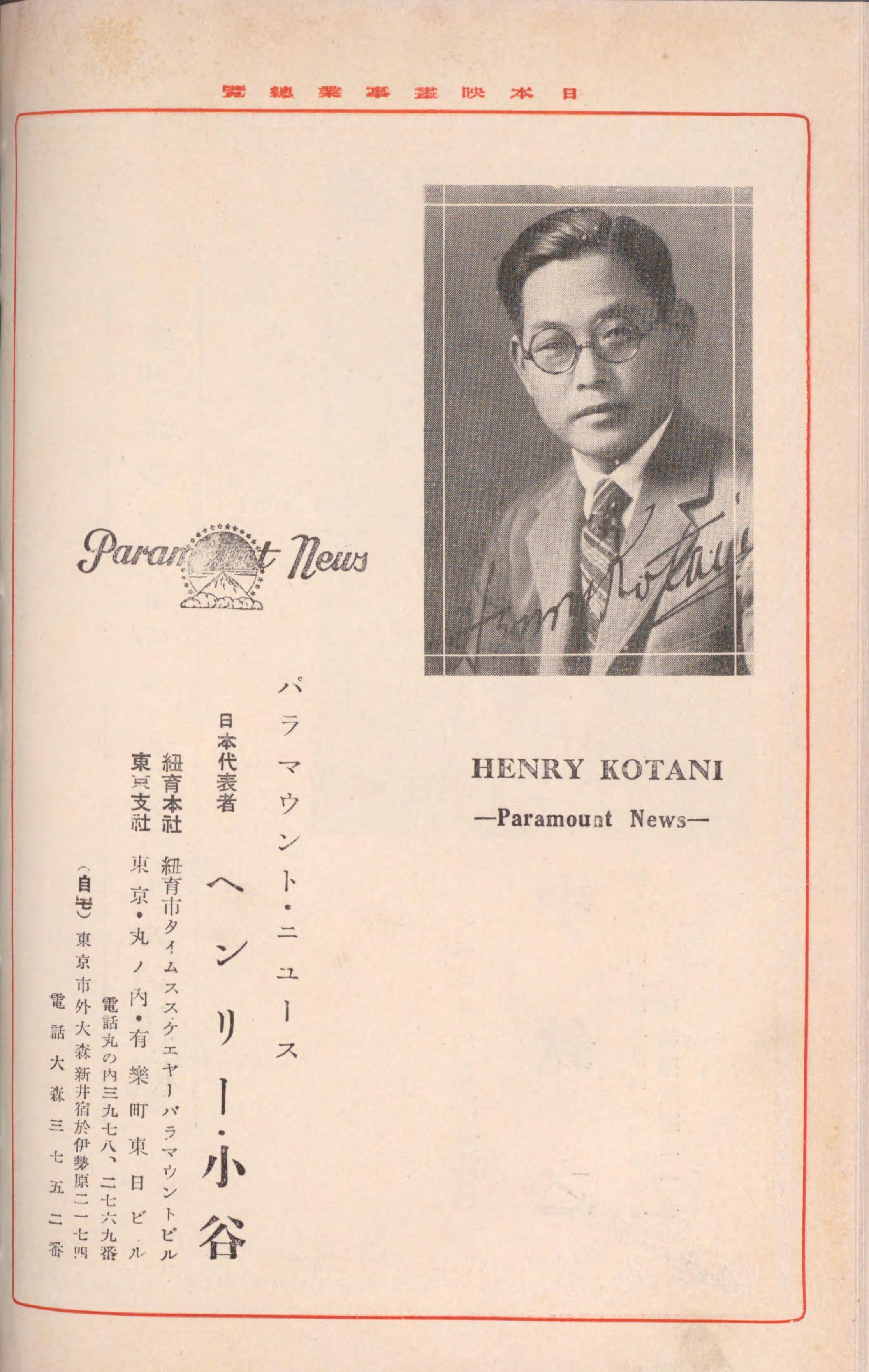Henry Kotani on:
[Wikipedia]
[Google]
[Amazon]
was a pioneering Japanese
 Born Kuraichi Kotani in Hiroshima Prefecture, Kotani emigrated to the United States with his parents when he was still a boy. Graduating from high school, he began working as an actor and cinematographer under the name Henry Kotani in Hollywood, particularly at Famous Players Lasky. He frequently worked on
Born Kuraichi Kotani in Hiroshima Prefecture, Kotani emigrated to the United States with his parents when he was still a boy. Graduating from high school, he began working as an actor and cinematographer under the name Henry Kotani in Hollywood, particularly at Famous Players Lasky. He frequently worked on
film director
A film director or filmmaker is a person who controls a film's artistic and dramatic aspects and visualizes the screenplay (or script) while guiding the film crew and actors in the fulfillment of that Goal, vision. The director has a key role ...
and cinematographer
The cinematographer or director of photography (sometimes shortened to DP or DOP) is the person responsible for the recording of a film, television production, music video or other live-action piece. The cinematographer is the chief of the camera ...
.
Career
 Born Kuraichi Kotani in Hiroshima Prefecture, Kotani emigrated to the United States with his parents when he was still a boy. Graduating from high school, he began working as an actor and cinematographer under the name Henry Kotani in Hollywood, particularly at Famous Players Lasky. He frequently worked on
Born Kuraichi Kotani in Hiroshima Prefecture, Kotani emigrated to the United States with his parents when he was still a boy. Graduating from high school, he began working as an actor and cinematographer under the name Henry Kotani in Hollywood, particularly at Famous Players Lasky. He frequently worked on Donald Crisp
Donald William Crisp (27 July 188225 May 1974) was an English people, English film actor as well as an early producer, director and screenwriter. His career lasted from the early silent film era into the 1960s. He won an Academy Award for Best S ...
's films. In 1920, on the recommendation of Cecil B. DeMille
Cecil Blount DeMille (; August 12, 1881January 21, 1959) was an American filmmaker and actor. Between 1914 and 1958, he made 70 features, both silent and sound films. He is acknowledged as a founding father of American cinema and the most co ...
, the newly formed Shōchiku
is a Japanese entertainment company. Founded in 1895, it initially managed ''kabuki'' theaters in Kyoto; in 1914, it also acquired ownership of the Kabuki-za theater in Tokyo. In 1920, Shochiku entered the film production industry and establishe ...
film company hired Kotani and brought him back to Japan. There he directed and photographed Shōchiku's first film, ''Shima no onna'' in 1920, and in 1921 wrote, directed and photographed ''Gubijinsō'', the first film of the star actress Sumiko Kurishima. His career at Shōchiku did not last long, but he helped establish the modern visual style of Shōchiku's output and raise cinematographers such as Michio Midorikawa. He later became head of the East Asian bureau of Paramount News
Paramount News was a newsreel series that was produced by Paramount Pictures from 1927 to 1957.
History
The Paramount newsreel operation began in 1927 with Emanuel Cohen as an editor. It typically distributed two issues per week to theaters acro ...
. In recognition of his contributions, he was given a lifetime achievement award at the Mainichi Film Awards
The
are a series of annual film awards, sponsored by '' Mainichi Shimbun'' (毎日新聞), one of the largest newspaper companies in Japan
Japan is an island country in East Asia. Located in the Pacific Ocean off the northeast coast of ...
in 1960.
Selected filmography
As cinematographer
*'' Believe Me, Xantippe'' (1918) *'' The Goat'' (1918) *'' Jane Goes A-Wooing'' (1919) *'' Mrs. Temple's Telegram'' (1920)As director
*'' Shima no onna'' (島の女) (1920) *'' Gubijinsō'' (虞美人草) (1921)As actor
*'' The Wrath of the Gods'' (1914) *''The Geisha
''The Geisha, a story of a tea house'' is an Edwardian musical comedy in two acts. The score was composed by Sidney Jones to a libretto by Owen Hall, with lyrics by Harry Greenbank. Additional songs were written by Lionel Monckton and Jame ...
'' (1914)
*'' The Typhoon'' (1914)
*'' The Sable Lorcha'' (1915)
References
External links
* * {{DEFAULTSORT:Kotani, Henry Japanese male film actors Japanese cinematographers 1887 births 1972 deaths Japanese male silent film actors 20th-century Japanese male actors People from Hiroshima Prefecture Japanese emigrants to the United States